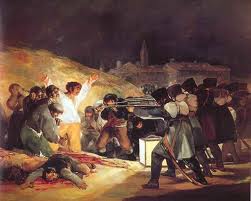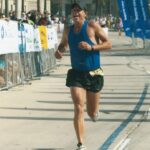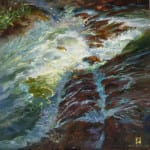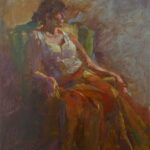
It was one of the most violent terrorist acts on America’s soil in recent history, at the world’s oldest annual marathon. Thousands experienced it locally and firsthand, as the event traditionally draws over 500,000 spectators. Millions viewed it on TV, replayed in shocking detail on every major national network.
Film showed runners who had just completed the race running back into the course to help the injured. Police and first responders rushed to the aid of the wounded with blankets, gurneys, and medical assistance. Viewers at televisions across the nation could only sit or stand transfixed as they tried to comprehend the carnage of the innocents who had suffered the shrapnel of a death-dealing blow. In living rooms everywhere, far from the smoke and violence, we were unable to think, breathe, or even lift a hand, transfixed by the horror of an ultimately cruel attack.
I have had the privilege to run the Boston Marathon three times. The highlight, for me, was The Hundredth, or Centennial Boston Marathon in 1996, that set the record for the world’s largest marathon at 38,708 entrants and 35,868 finishers. It’s properly called the “Boston Athletic Association Marathon,” and is begun and run in cities largely outside Boston—in fact, runners don’t even see Boston until five miles after Heartbreak Hill, at 24.5 miles. In fact, in the early days of the marathon, what was printed on the finishers’ medals was the name, “the American Marathon.”

But there was to be no victory that day, April 15th, for those runners on their way to the finish line at 2:49 p.m…. even for those who were turning that final corner onto Boylston Street to finally realize their dreams of completing “the Boston.” The bombings destroyed those dreams of the finish line in the same instant that they devastated the crowds gathered around that line. It was hopeless to go back, to wish it hadn’t happened. Only one question remained: “What can we do now; what should we do?”
That brings it all the way back, to each one of us. As artists, what can we do in the face of this disaster, and others, that threaten to destroy even the survivors?…that threatens to overwhelm all the good that exists in society, in any works of man and art, and which is powerful enough to reduce our creative morale to rubble?…so powerful that we might ultimately consider that the arts are nothing in the face of real evil, and that the artist and his/her artwork has “head in the clouds,” and is standing in front of tragedy without real weapons, or even an answer to man’s inhumanity to man.
Should we continue to stand, or run? Shouldn’t we feel defeated, then get angry, and seek revenge? Should we abandon our principles? If we do that, then we fall prey to the very behavior that we condemn in those who try to steal and destroy that which is good. In the wake of senseless acts like the Boston bombings, I feel all of those emotions—but that’s all they are. As an artist, I would rather attempt to do something positive, than to believe that there can be no response or action that is worthwhile, and helpful. So once again I have been considering the power of Art in light of this question: as an artist, what can I do to counteract this violence that exists in the world, this evil, this threat to all we hold to be true?
“Do not be overcome by evil, but overcome evil with good.” – Romans 12:21

Artworks have the capacity to convey a positive message, to reveal the truth of the unseen, to describe beauty, to define the good that still exists, to communicate between cultures and without spoken language, and to heal. Perhaps that is why occupying armies frequently seek to destroy first the artworks of those they wish to vanquish—to immediately banish beauty, order, and hope in the good from the oppressed.
But each working artist that believes in the power of Art to convey the good is like a Florence Nightingale on the battlefield, among the tents where the wounded lie, going from one victim to the other and ministering to the spirits of those who would otherwise lose hope. Grace and strength will always win out over malice and wickedness. There is power in benevolence, and hope in the sight of the loveliness of a creative spirit. Art that expresses the truth in kindness and gratefulness will disarm the rage, and advance the welfare of all who see it.
As artists, we can do good, and strive to create great artworks. To create at the highest level is a victory over all who would strive to destroy.

Kelly Medford says
Thank you for taking the time to write this thoughtful post and this is an important question that I’m sure most realist painters especially ask themselves often: what larger purpose is my art serving?
Although I fear that bringing beauty to people’s lives is oversimplfying, it is indeed a powerful force to be maintained and cultivated in the face of senseless violence.
Another thing that I wanted to add is the importance that realism serves (like Goya’s 3rd of May painting that you chose) to document events, people and changing landscapes. Something that is invaluable to history and generations to come.
Kirk Larsen says
Well put and spot on sentiment.
Nancy Boren says
Thanks for your comments-especially coming from a runner-artist. In the wake of a national tragedy, that most valiant of symbols, the American flag, is flown from shore to shore. Humans react to strong visuals. Lots of art was created after 911. We are painters, we don’t have to apologize for trying to say something with the tools we know best. The pen (paintbrush) is mightier than the sword.
Diane Leonard says
Your message is well said, Rick — I recently moved back to Boston a few months ago — my heart and soul belong here. I was glued to the television — feeling very sad and anguishing over the events — I couldn’t paint. I just sat there! I paint to bring joy and happiness to the world and my heart felt no joy. I finally sent out a newsletter wishing us all Peace! I am painting again, Rick, and thank you for such a great blog. Diane Leonard
Lucy Dickens says
Wow! I am so impressed with this article. I was caught of guard with your reference to scripture. What a beautiful surprise. We are gifted as creative people for a reason and the power of artwork to evoke hope, beauty, grace and joy is amazing. There is so much an image can convey in overcoming darkness and sharing a sense of the divine. This is what I strive for with all of my paintings and the stories that accompany them. Thank you so much for sharing. I am encouraged. Lucy Dickens Fine Art
Rick J. Delanty says
Thank you, Lucy, for your comments–the power of art in the hands of someone who loves what they do, and his/her fellow man, cannot be underestimated. True, the creation of artworks is not the primary solution to mankind’s cruelty to other men, but the power of creation and a voice that says “I love the gifts I have been given, even those I have not met” is sought and appreciated everywhere.
joyce snyder says
This is the best article as to what art can do for anyone. It adds beauty to our world instead of fear and evil. We all need to be this positive. Thank you Rick.
Ann Kraft Walker says
very well said. I appreciate your thoughts,
Irena says
The first name of Goya was Francisco and not Rancisco – please correct.
The title of the painting was “The Shootings of May Third 1808” and not ‘Third of May’. Thank you.
Oil Painters of America says
Thanks Irena. We’ve updated our typo of Goya’s name.
In regards to the painting title, it is commonly known as “The Third of May 1808” and technically speaking “The Third of May 1808 in Madrid: the executions on Principe Pio hill” (based on records at the Museo Nacional del Prado, where the artwork is currently exhibited).
Thanks for keeping us on our toes!
usama mahmood says
The oil paintings which are shown in the above home page is one of the best paintings i ever seen . The colors combination and the effects are to good.
Jill Harrington Nichols says
Thank you for sharing your thoughts. Word of the bombing reached me in Point Lobos, California while I was painting with fellow artists attending the Plein Air Convention. Point Lobos is a wild reserve, pristine; surrounded by nature’s majesty; mountains, cliffs with crashing surf, seals popping their heads up. It was a surreal backdrop to the tragic news. I overheard a woman explaining to a fellow painter that she could no longer paint that day. Her son had called from Boston to let her know that a bomb had gone off near to his office and that he was Okay.
Visiting from Connecticut I was immediately struck with the immensity it of it; compounded by thoughts of the recent tragedy in my neighboring town of Newtown, and having weathered two major storms my thoughts melded this new tragedy with my immediate surroundings. As I processed the information my painting took on a different quality. What started as a blocked-in color study turned into a moody and poignant piece. Each stroke became a salve to the psychic wounds, a message to those in Boston and all affected. The act of painting, more than ever, became a life affirming action and with it a deeper appreciation of the moment.
Rick J. Delanty says
Jill,
I empathize with your feelings, especially how your received the news while you were painting. As a human being who loves and appreciates the good, your responses to what you were seeing as you were painting were changed. And the process of working/creating changed what you were thinking and feeling. That alone, to me, demonstrates the power of art: not only to the viewer, but within the artist. That alone–in the face of the world’s violence– would make the creation of art worth doing.
Chris Nesbitt says
A wise observation from a wise man – and gifted artist.